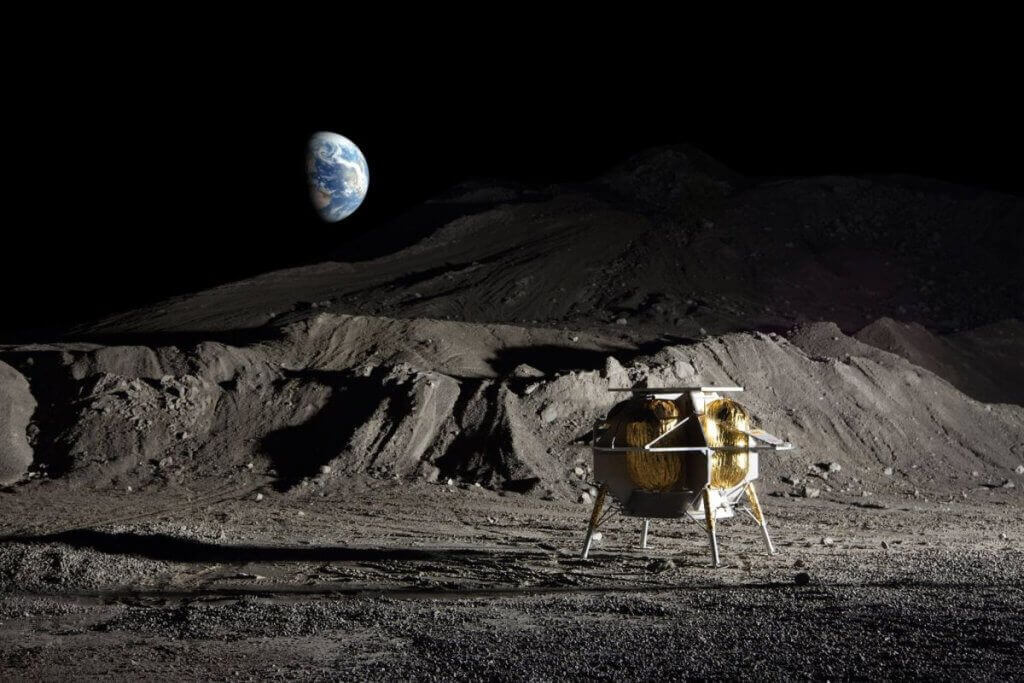
Private Peregrine moon lander will now touch down near ‘geologic enigma’ (Image Credit: Space.com)
NASA has redirected a private U.S. moon lander to a new touchdown site to increase science returns ahead of crewed lunar missions.
The Peregrine lunar lander, built by Pittsburgh-based company Astrobotic, is now slated to touch down, along with a suite of NASA science gear, this year in a strange patch of the moon known as the Gruithuisen Domes.
Scientists can’t yet explain how the moon generated enough magma to create the Earth-like domes in the moon’s Ocean of Storms region, given that lunar geology lacks two key ingredients: plate tectonics and substantial water. Peregrine’s landing in 2023 will be the first in this region ahead of a planned 2026 NASA effort to examine the domes.
Related: NASA’s full plate of moon missions before astronauts can go
NASA officials suggested that the successful completion of the uncrewed Artemis 1 moon mission last year, along with preparations to name the Artemis 2 moon-circling crew this spring, gave the agency confidence that Peregrine should move to this region instead of its original target of Lacus Mortis, a basaltic flow plain.
“As NASA’s Artemis activities mature, it became evident the agency could increase the scientific value of the NASA payloads if they were delivered to a different location,” agency officials wrote in a brief statement (opens in new tab) on Thursday (Feb. 2). Astrobotic officials pointed to the agency’s post on Twitter (opens in new tab) but offered no independent commentary on the decision.
Moving Peregrine to the new location will also reduce risk for the main payload aboard the 2026 mission slated for the region, NASA said. That payload is a set of instruments called the Lunar Vulkan Imaging and Spectroscopy Explorer (Lunar-VISE) that will examine how the domes were formed and what they are made of.
“Relocation of Astrobotic’s Peregrine CLPS flight … near the Domes will present complementary and meaningful data to Lunar-VISE without introducing additional risk to the lander,” NASA officials said.

Peregrine is slated to deliver 11 payloads on behalf of NASA through the agency’s Commercial Lunar Payload Services (CLPS) program. In the coming years, a suite of robotic landers, rovers and other spacecraft are slated to work alongside Artemis program astronauts, who may touch down near the moon’s south pole as soon as 2025 on the Artemis 3 mission.
Peregrine is just about set to go. Astrobotic completed space qualification tests with the lander in late January and are now waiting for word from the launch provider, United Launch Alliance (ULA), before shipping the lander to Florida for mating to ULA’s Vulcan Centaur rocket.
Liftoff is slated for no earlier than the first quarter of 2023 from from Cape Canaveral Space Force Station. It will be the debut launch for Vulcan Centaur and the beginning of an industry shift toward intensive moon exploration. To date, all successful moon landings have been led by governmental space agencies, not private companies. Peregrine also may not be first of the CLPS sojourns to arrive at the moon; Intuitive Machines plans to launch its Nova-C lander in the first quarter of 2023, for example.
And another private mission is flying to the moon right now: The Hakuto-R lander, built by Tokyo-based company ispace, is scheduled to touch down in April. The spacecraft completed a deep-space maneuver (opens in new tab) on Thursday, putting it on track for landing. Hakuto-R’s major payload is Rashid, a small rover provided by the United Arab Emirates’ space agency.
Elizabeth Howell is the co-author of “Why Am I Taller (opens in new tab)?” (ECW Press, 2022; with Canadian astronaut Dave Williams), a book about space medicine. Follow her on Twitter @howellspace (opens in new tab). Follow us on Twitter @Spacedotcom (opens in new tab) or Facebook (opens in new tab).








